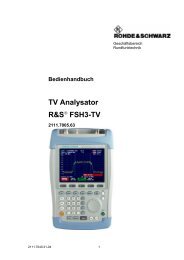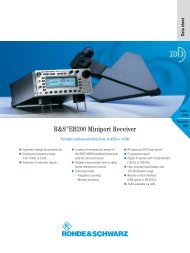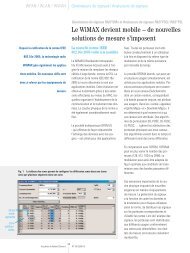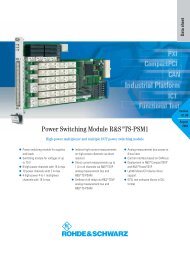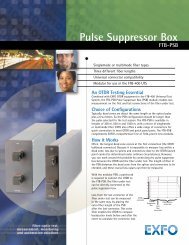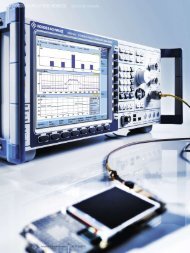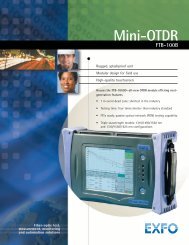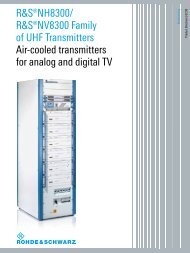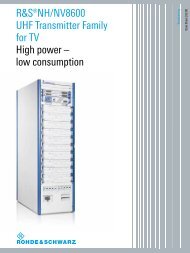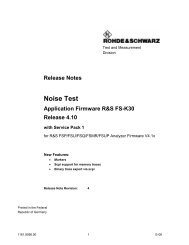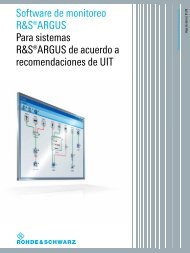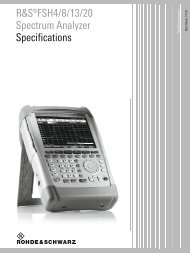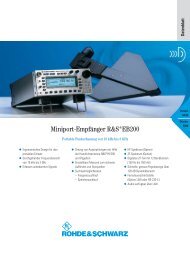Top Ten SCPI Programming Tips for Signal Generators - Rohde ...
Top Ten SCPI Programming Tips for Signal Generators - Rohde ...
Top Ten SCPI Programming Tips for Signal Generators - Rohde ...
You also want an ePaper? Increase the reach of your titles
YUMPU automatically turns print PDFs into web optimized ePapers that Google loves.
Command Synchronization<br />
4.2.4.2 Polling Methods<br />
For polling the baseband progress (using SOUR:BB:PROG:MCOD) or the event<br />
status register (using *ESR), there are two methods: the loop method and the timer<br />
method.<br />
Loop with delay function:<br />
Pro: This method is very simple to implement and is failsafe.<br />
Cons: Other (not interdependent) commands cannot be sent to the instrument<br />
while polling, since the test program is “trapped” in the loop. Communication<br />
with other instruments is also not possible in the meantime 4 .<br />
Repetitive timer:<br />
Pro: The communication with the instrument and other instruments is not<br />
blocked while polling.<br />
Con: This method is more difficult to implement (depending on the<br />
programming language used).<br />
4.3 Synchronization of Multiple Instruments<br />
Often, automated test programs control not only a single signal generator but all<br />
instruments of a test setup. In this case, it is important to synchronize the different<br />
instruments such as generators, spectrum analyzers and power meters to ensure<br />
correct measurements results.<br />
4.3.1 Settling of Test <strong>Signal</strong><br />
For example, the test setup comprises a signal generator that provides a test signal to<br />
a device under test (DUT) and a spectrum analyzer that analyzes the output of the<br />
DUT. Both instruments are configured by the same test program.<br />
You can configure general instrument settings (such as RF frequency or trigger<br />
settings) sequentially or in parallel <strong>for</strong> both instruments.<br />
It must be assured that the test signal has settled be<strong>for</strong>e the measurement is started<br />
on the spectrum analyzer. Configure and activate the test signal and finally send an<br />
*OPC query. Wait <strong>for</strong> the response. After the generator has confirmed command<br />
completion, the test signal is ready <strong>for</strong> operation and you can (remotely) start the<br />
measurement.<br />
If you do not synchronize the instruments, the generator may still be calculating the<br />
test signal while the spectrum analyzer already starts measuring. Obviously, this will<br />
lead to wrong results.<br />
4 It is possible to overcome these limitations using a sophisticated technique called multithreading. This<br />
technique is not easy to implement and is only recommended <strong>for</strong> programming experts.<br />
1GP79_1E <strong>Rohde</strong> & Schwarz <strong>Top</strong> <strong>Ten</strong> <strong>SCPI</strong> <strong>Programming</strong> <strong>Tips</strong> <strong>for</strong> <strong>Signal</strong> <strong>Generators</strong> 15





